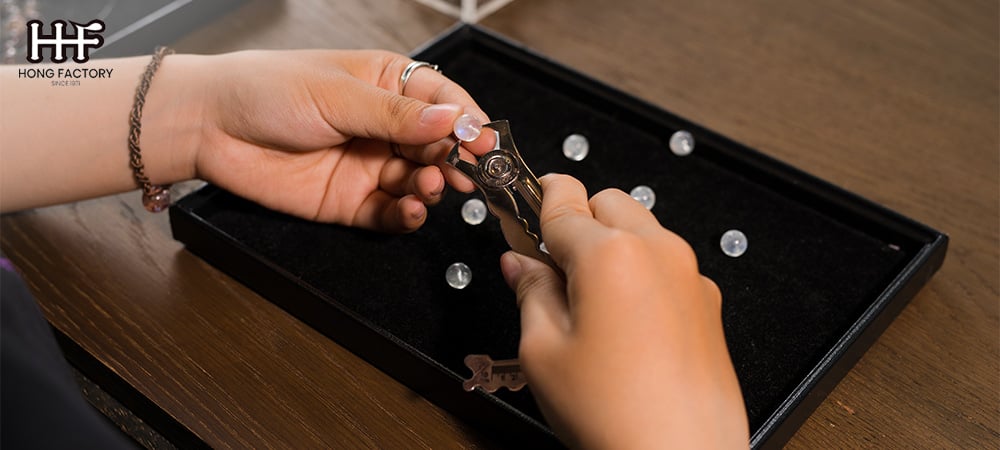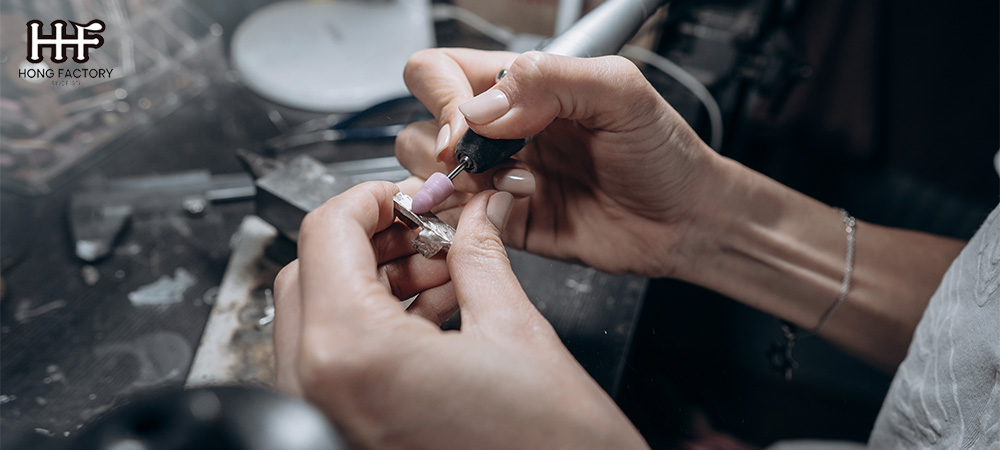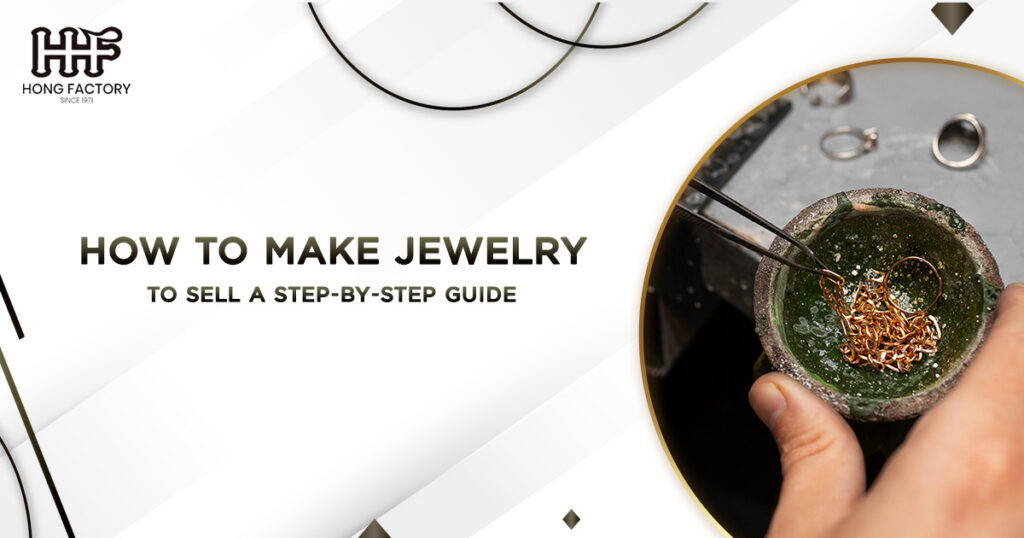If you’ve ever admired handmade jewelry and wondered, Could I do that? you’re in the right place. Making jewelry is a rewarding craft that, with practice, can become a profitable business. Here’s a step-by-step guide on how to make jewelry to sell, covering essential tools, techniques, and strategies to create pieces that people will love and buy.
Why Start a Jewelry-Making Business?
Handmade jewelry has a timeless appeal, with customers looking for unique, personalized pieces. The jewelry market continues to grow, and with the right approach, you can turn your hobby into a sustainable income. Making jewelry to sell allows you to be creative, earn money, and connect with people who appreciate your art.
Benefits of Selling Handmade Jewelry
- Creative Expression – Jewelry making is an art form where you can showcase your style, whether that’s minimalist, boho, classic, or avant-garde.
- Flexible Business Model – You can sell jewelry part-time or full-time, online, or at local events.
- Low Startup Costs – Compared to many businesses, jewelry making requires relatively low upfront investment, especially if you start with simple designs.

Essential Tools and Materials for Jewelry Making
Before you begin, gather some essential tools and materials. Here’s a look at what you’ll need
Tools for Jewelry Making
- Pliers – Round-nose and flat-nose pliers are must-haves for bending and forming wire and other materials. Round-nose pliers are ideal for making loops, while flat-nose pliers can grip pieces securely.
- Cutters – Jewelry cutters will help you trim wires, chains, and beading thread. Ensure they’re sharp to avoid frayed edges.
- Hammer and Anvil – These tools are used to shape metal and create texture. Different hammers (ball-peen, planishing, etc.) offer various textures.
- Measuring Tape and Calipers – To ensure accuracy in length and dimensions, these tools help keep your designs consistent, which is crucial for selling.
- Soldering Kit – Essential for working with metals and setting stones, a soldering kit lets you create strong connections, particularly for rings and metal-based designs.
Materials
- Wire and Chains – Choose between silver, gold, copper, or brass for a variety of designs. Thicker wires can be used for rings, while finer wires are better for wrapping stones or beads.
- Beads and Stones – Gemstones, crystals, pearls, and other beads add uniqueness to your work. Natural stones add authenticity, while synthetic beads offer a modern touch.
- Clasps and Fasteners – To finish necklaces, bracelets, and earrings, a variety of clasps (lobster, magnetic, toggle) can complement your designs and add security.
- Findings – Ear wires, jump rings, and other connectors are essential to any piece. Findings help assemble jewelry pieces while ensuring they stay durable and functional.
Types of Jewelry You Can Make
Choosing a style of jewelry is key to your brand and business strategy. Here are some popular types to consider.
- Necklaces and Pendants
Necklaces offer endless design possibilities. Pendants can feature a single focal point, such as a gemstone or clay charm, and can be added to chains or cords. For an added personalized touch, consider engraving or wire-wrapping stones.
- Bracelets and Bangles
Bracelets are versatile and come in many forms. You might make charm bracelets with bead strings, or wire-wrapped bangles using metals. Beaded bracelets are especially popular because of their customizable designs.
- Earrings
Earrings are a great beginner’s project, with designs ranging from simple studs to dangling statement pieces. Materials like wood, resin, and lightweight metals are commonly used in earrings to maintain comfort.
- Rings
Rings are both challenging and rewarding. You can craft rings from metal, wire, or even wood, adding unique elements like small stones or engravings. Rings often involve advanced techniques, like soldering or setting stones, but they offer a high profit margin due to their intricate design.
- Anklets and Toe Rings
Anklets and toe rings are trendy additions to summer jewelry collections. They’re often made with minimal materials and simple designs, which makes them an easy option to produce and sell in bulk.
Step-by-Step Guide to Making Jewelry
To successfully make jewelry to sell, start by mastering some basic skills and techniques. Here’s a step-by-step process to help you create high-quality pieces.
Step 1 : Choose Your Design
Sketch your design ideas before you start. It can help to create a mood board to inspire your designs and choose a color palette and style. Whether you’re making a beaded necklace or a wire-wrapped ring, a clear plan helps prevent mistakes and ensures that each piece aligns with your vision.
Step 2 : Cut and Prepare Materials
Measure and cut your materials carefully. Cut chains or wire to the correct length and shape your materials, such as bending wire to fit your design. If using beads, arrange them in the order you want before stringing, ensuring a balanced and symmetrical look.
Step 3 : Assemble the Piece
Start putting your jewelry together according to your design. For wire-wrapped pieces, you’ll twist the wire to secure stones or beads. Use jump rings to connect chain links, add clasps, or attach pendants.
Step 4 : Polish and Finish
Finishing your piece is crucial. For metal pieces, use sandpaper or a polishing cloth to smooth rough edges and make the surface shine. Apply a coat of varnish or sealant on beaded jewelry or painted elements to enhance durability.
Step 5 : Quality Check
Before listing your jewelry for sale, inspect each piece. Check for secure closures, smooth edges, and durable construction to ensure customer satisfaction. Make sure there are no loose stones or sharp edges, as quality craftsmanship is key to building a loyal customer base.

How to Market and Sell Your Jewelry
Once you have your jewelry pieces ready, the next step is to sell them. The internet offers numerous platforms to showcase your work, and each has unique benefits.
- Online Marketplaces
Platforms like Etsy, eBay, and Amazon Handmade are popular for jewelry sellers. They have a built-in audience and tools to help you get started with minimal investment. Be sure to create a captivating product description that includes keywords like handmade jewelry or unique jewelry gifts to reach interested buyers.
- Social Media Marketing
Social media sites like Instagram, Facebook, and Pinterest are perfect for showcasing jewelry. Take high-quality photos of your pieces in natural light, use relevant hashtags, and post frequently. Instagram Reels and Pinterest pins are especially effective for attracting visual shoppers.
- Build a Website
A website allows you to create a unique brand and control the customer experience. Platforms like Shopify and Wix make it easy to set up an online store with payment options. Write detailed descriptions, use keywords like how to make jewelry to sell, and set up a blog to boost SEO and drive organic traffic to your site.
- Local Markets and Craft Fairs
In-person sales allow customers to see and feel your jewelry, building trust and encouraging immediate purchases. Research local craft fairs, farmers’ markets, or pop-up events to reach a wider audience. Set up an attractive display, and consider offering discounts to boost sales.
Pricing Your Jewelry for Profit
Setting the right price is crucial for attracting buyers while covering costs and ensuring profit. Here are some tips
- Cost of Materials : Add up all material costs and any supplies used in production, including packaging.
- Time Spent : Charge for your time based on an hourly rate. Track time spent on each piece to determine fair compensation.
- Overheads : Don’t forget extra expenses like shipping, packaging, marketing, and platform fees.
- Profit Margin : Aim for a profit margin that covers all costs and makes the business worthwhile. Many sellers use a markup of at least 2-3 times the cost of materials to account for expenses and profits.
Conclusion
With practice and dedication, you can learn how to make jewelry to sell and transform your hobby into a successful venture. Focus on perfecting your craft, creating a strong brand, and connecting with your customers. Each piece of jewelry you sell is a reflection of your creativity, and as your business grows, you’ll continue to refine your skills and style.

